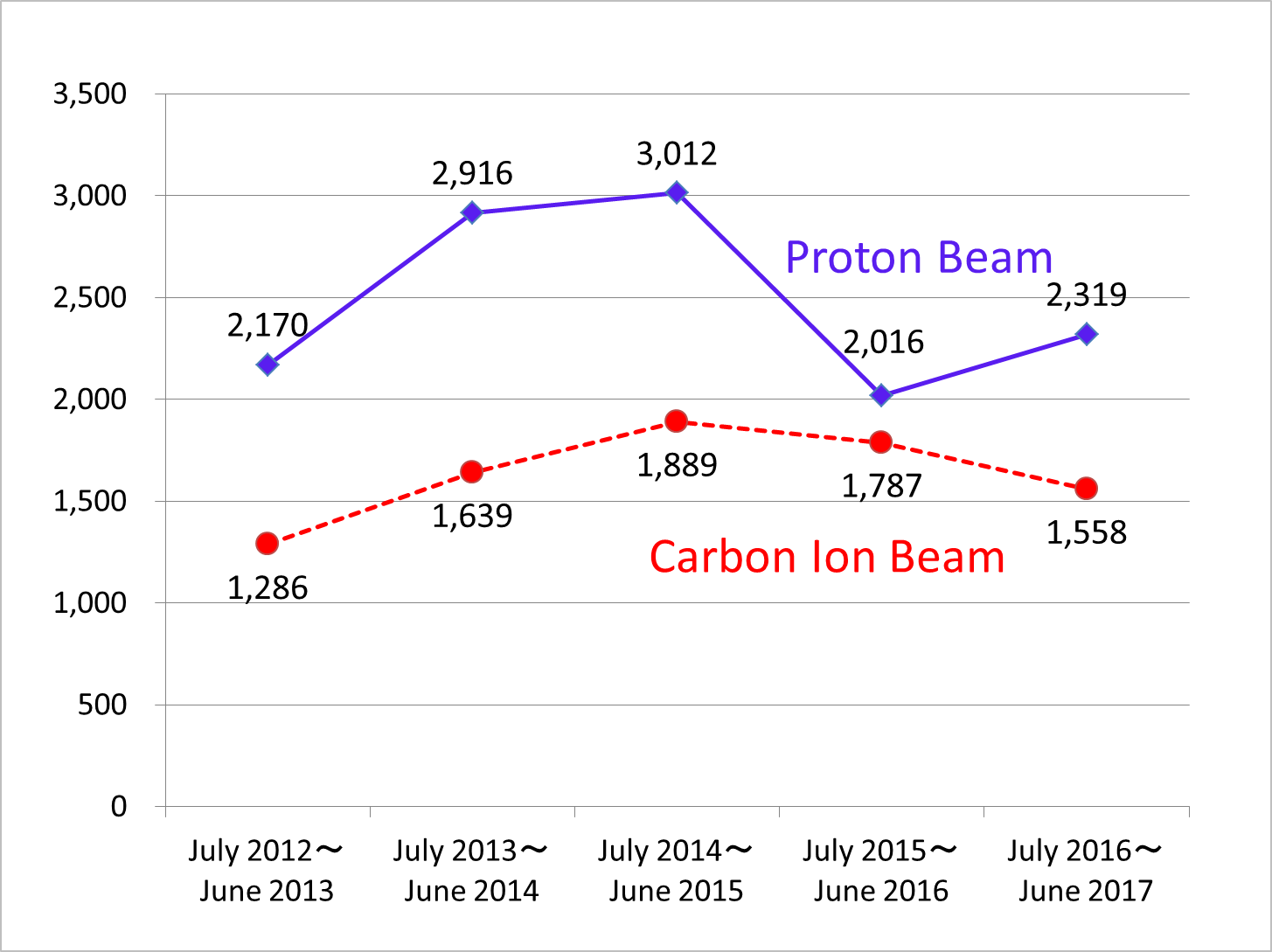Column Finance and the Social Security System 2018.03.07
【Aging, safety net and fiscal crisis in Japan】No.53: Issues with Carbon Ion Beam Cancer Medicine
As of February 2018, the number of Carbon Ion Beam and Proton Beam facilities for cancer treatment has increased to 5 and 12, respectively. Based on information from the website of the Hyogo Ion Beam Medical Center (HIBMC), which operates both Carbon Ion Beam and Proton Beam facilitates, these two methods have the following advantages over conventional X-rays:
[In the case of conventional radiotherapy using X-ray, the radiation dose at the region close to the skin is higher, and the dose at the tumor at some depth of the body is lower. Therefore, in some cases the results are insufficient. On the other hand, in the case of the charged particle, the dose is low at shallow depth and sharply increases at a certain depth, allowing sufficient dose of radiation to attack the tumor. This leads to better treatment results.]
Unlike the Proton Beam cancer treatment equipment, which was developed in the United States, the Carbon Ion Beam equipment was developed in Japan. The initial investment costs for the Proton Beam and Carbon Ion Beam equipment and buildings were about 8 billion and 12 billion yen, respectively. Based on data gathered between July 2016 to June 2017, the average cost per patient was 2,765 thousand yen for Proton Beam and 3,149 thousand yen for Carbon Ion Beam treatment.
Public medical insurance started covering Carbon Ion Beam therapy for Unresectable Bone and Soft Tissue Tumors in April 2016, so the financial burden on the patient has been reduced. However, other cancer treatments are classified under the advanced medicine system and are not covered by public medical insurance. Therefore, the patient is responsible for the entire cost of the surgery. To lower the financial burden, it is necessary to increase the number of treated patients in order to reduce the surgery's fixed cost per patient. However, as shown in Figure 1, the number of patients receiving Carbon Ion Beam therapy under the advanced medicine system is decreasing. The number of Unresectable Bone and Soft Tissue Tumors excluded from the advanced medicine system was small among Carbon Ion Beam therapy. I asked the Ministry of Health, Labor and Welfare what the reasons are, but they did not provide an answer.

(Source)Ministry of Health, Labor and Welfare
